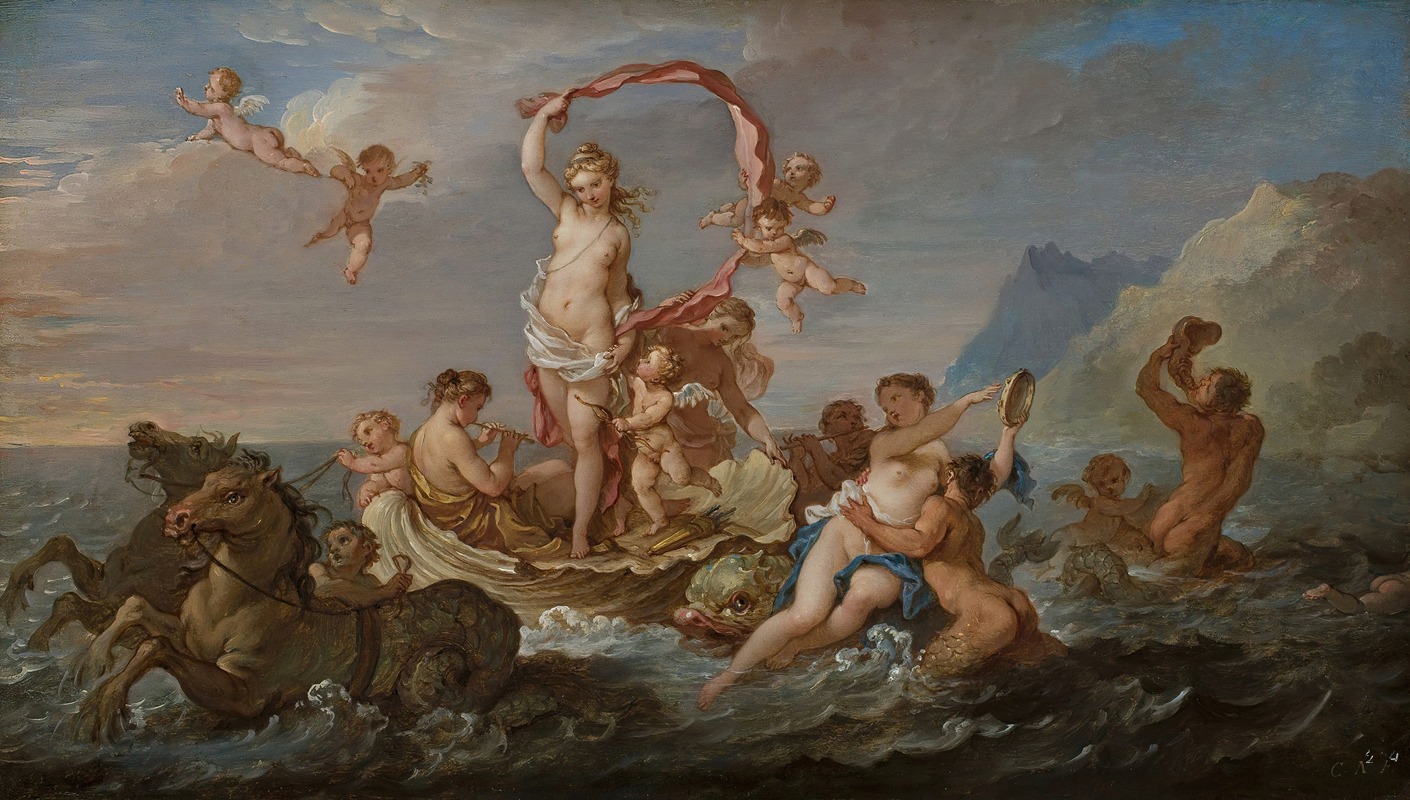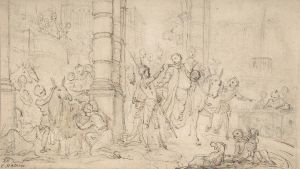
Triumph of Amphitrite
A hand-painted replica of Charles-Joseph Natoire’s masterpiece Triumph of Amphitrite, meticulously crafted by professional artists to capture the true essence of the original. Each piece is created with museum-quality canvas and rare mineral pigments, carefully painted by experienced artists with delicate brushstrokes and rich, layered colors to perfectly recreate the texture of the original artwork. Unlike machine-printed reproductions, this hand-painted version brings the painting to life, infused with the artist’s emotions and skill in every stroke. Whether for personal collection or home decoration, it instantly elevates the artistic atmosphere of any space.
Charles-Joseph Natoire's Triumph of Amphitrite is a notable work by the French Rococo painter, who was active during the 18th century. Natoire, born in 1700 and passing in 1777, was a prominent artist of his time, known for his decorative paintings, mythological themes, and contributions to French art institutions. He served as the director of the French Academy in Rome from 1751 to 1775, a position that underscored his influence in the art world.
The painting Triumph of Amphitrite depicts Amphitrite, a figure from Greek mythology who is the wife of Poseidon, the god of the sea. Amphitrite is often associated with the sea's beauty and power, and her "triumph" is a common theme in art, symbolizing her elevated status among the deities of the ocean. In this work, Natoire employs the Rococo style, characterized by its lightness, elegance, and use of soft, pastel colors. The composition likely includes dynamic movement, flowing drapery, and a sense of theatricality, hallmarks of Natoire's approach to mythological subjects.
The exact date of the painting's creation is not definitively documented, but it aligns with Natoire's broader body of work, which often explored classical mythology and allegory. The painting may have been commissioned for a private patron or as part of a larger decorative scheme, as was common for artists of Natoire's stature during the Rococo period.
Natoire's works, including Triumph of Amphitrite, reflect the artistic trends of 18th-century France, where mythological and allegorical themes were popular among the aristocracy and elite. His ability to blend classical themes with the decorative sensibilities of the Rococo era made him a sought-after artist for both public and private commissions.
While specific details about the current location or provenance of Triumph of Amphitrite are not readily available, Natoire's works are housed in various prestigious collections, including the Louvre Museum in Paris and other European institutions. His legacy as a master of Rococo art endures, and his paintings continue to be studied for their technical skill and embodiment of the artistic ideals of his time.
This concise overview is based on available historical records and avoids speculation about undocumented aspects of the painting.


















